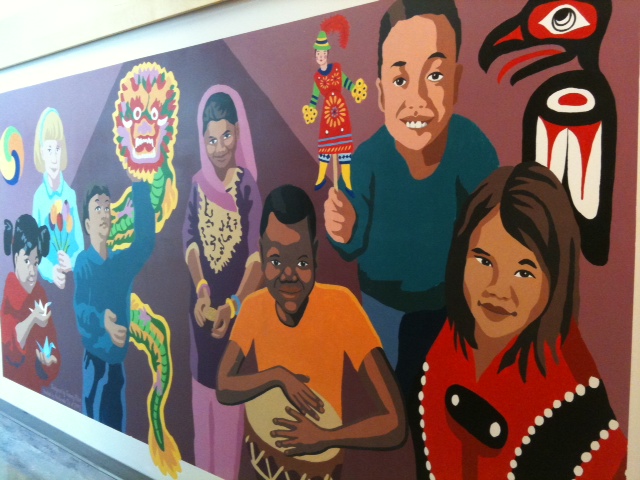Passed in 1988, the Canadian Multiculturalism Act was the first act of its kind in the world. It enshrined into law the federal government’s commitment to promoting and maintaining a diverse, multicultural society (see Multiculturalism).

Historical Background
Multiculturalism became the official policy of the Canadian government on 8 October 1971. Although limited resources were committed toward the implementation of the policy at the time, Prime Minister Pierre Trudeau claimed multiculturalism was the best way of “assuring the cultural freedom” of all Canadians, declaring, “The Government will support and encourage the various cultures and ethnic groups that give structure and vitality to our society.”
Trudeau’s announcement was a direct result of the Royal Commission on Bilingualism and Biculturalism. Established by Prime Minister Lester B. Pearson in 1963, the Commission was a response to growing francophone nationalism in Quebec. Its mandate was to “inquire into and report upon the existing state of bilingualism and biculturalism in Canada and to recommend what steps should be taken to develop the Canadian Confederation on the basis of an equal partnership between the two founding races [English and French].”
Other ethnic groups, most prominently Ukrainian Canadians, quickly took issue with the Commission’s narrow focus, and pressed the government to consider the contribution of all peoples. Senator Paul Yuzyk, who was of Ukrainian descent, became the first person to use the term “multiculturalism” in Parliament, as part of his maiden speech, “Canada: A Multicultural Nation.” In light of these concerns, the Commission’s final report included 16 recommendations for policies relating to multiculturalism and multilingualism, although it stopped short of recommending official multiculturalism, which the government nevertheless adopted. Quebec opposed the adoption of multiculturalism as a policy, on the grounds that it devalued the role of the French and English contributions to Canadian Confederation.
Initially, the government committed to support multiculturalism by assisting the development of cultural and ethnic groups, helping members of those groups overcome barriers to participation in society, promoting cultural exchange and encouraging immigrants to learn French or English. A Ministry of Multiculturalism and the Canadian Consultative Council on Multiculturalism were established in 1973 to monitor the efficacy of its goals. In 1982, multiculturalism was affirmed in section 27 of the Charter of Rights and Freedoms, instructing that the Charter “shall be interpreted in a manner consistent with the preservation and enhancement of the multicultural heritage of Canadians.”

Establishing the Act
Though it was official policy, the government’s support of multiculturalism was criticized for being largely symbolic. Few resources were devoted to the initiative, and critics suggested it was more concerned with promoting identity than addressing concerns about equitable treatment in Canadian society (see Canadian Identity and Language).
In 1985, the House of Commons created a Standing Committee on Multiculturalism to address these criticisms and modernize multicultural policy. The committee published a report with a list of recommendations in 1987.
On 1 December 1987, Secretary of State David Crombie introduced the Canadian Multiculturalism Act. It received Royal Assent on 21 July 1988. The Act enshrined multicultural policy in law, declaring the government would “recognize and promote the understanding that multiculturalism is a fundamental characteristic of the Canadian heritage and identity” and “promote the full and equitable participation of individuals and communities of all origins in the continuing evolution and shaping of all aspects of Canadian society and assist them in the elimination of any barrier to that participation.” Canada was the first country in the world to pass a national multiculturalism law.
At the time, critics of the new law said that it ignored many of the Standing Committee’s recommendations, including re-establishing a Ministry of Multiculturalism. For example, writing in the Globe & Mail, columnist Jeffrey Simpson said, “the act creates no new ministry, offers no additional funds for multiculturalism (however defined) and guarantees no rights no otherwise already protected,” adding “it's hard to see how any member of a multicultural group will benefit from this bill.”
Effects and Legacy
The Act affirmed Canada’s status as a multicultural nation, presenting the notion of multiculturalism as a force for positive change. It encouraged all government departments to take responsibility for the implementation and support of multicultural policies, specifically by encouraging diverse involvement in Canada’s major institutions. The Act also implemented a series of regular reports on the efficacy and reach of Canada’s multicultural policy, which helped to strengthen it. It laid the groundwork for the eventual creation of the Department of Multiculturalism and Citizenship, which worked more specifically to address barriers to equal opportunity and integration.


 Share on Facebook
Share on Facebook Share on X
Share on X Share by Email
Share by Email Share on Google Classroom
Share on Google Classroom

.jpg)



